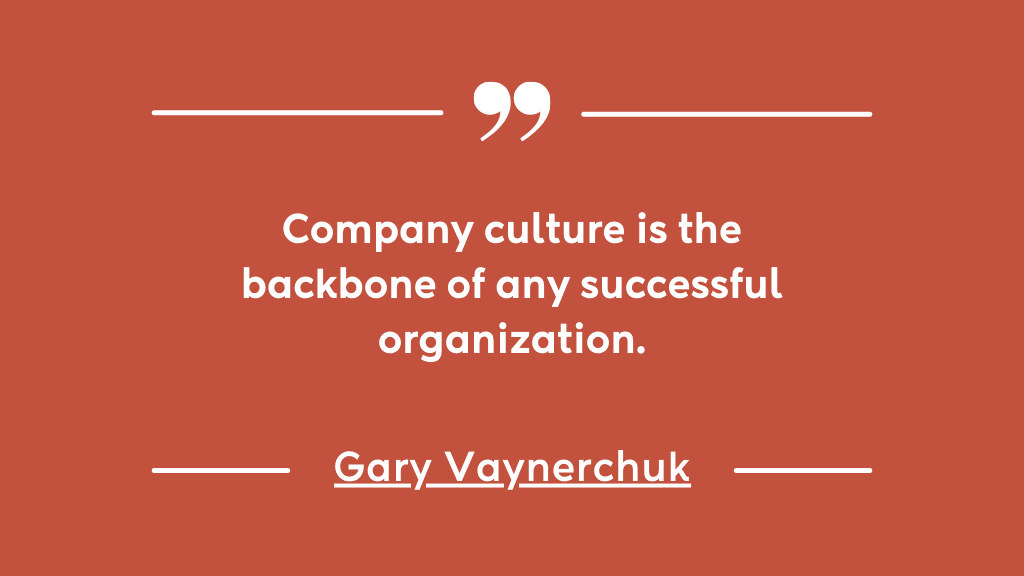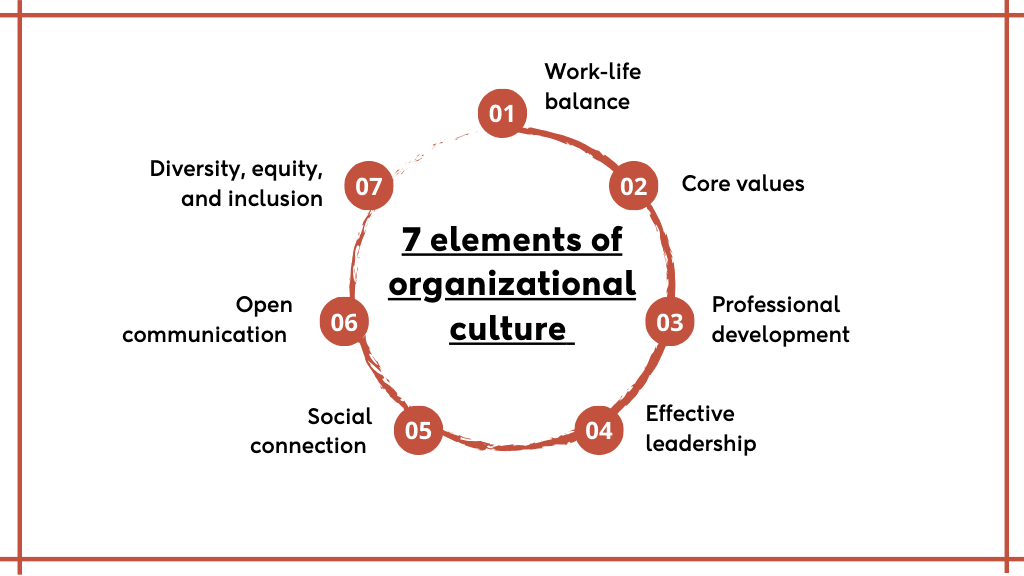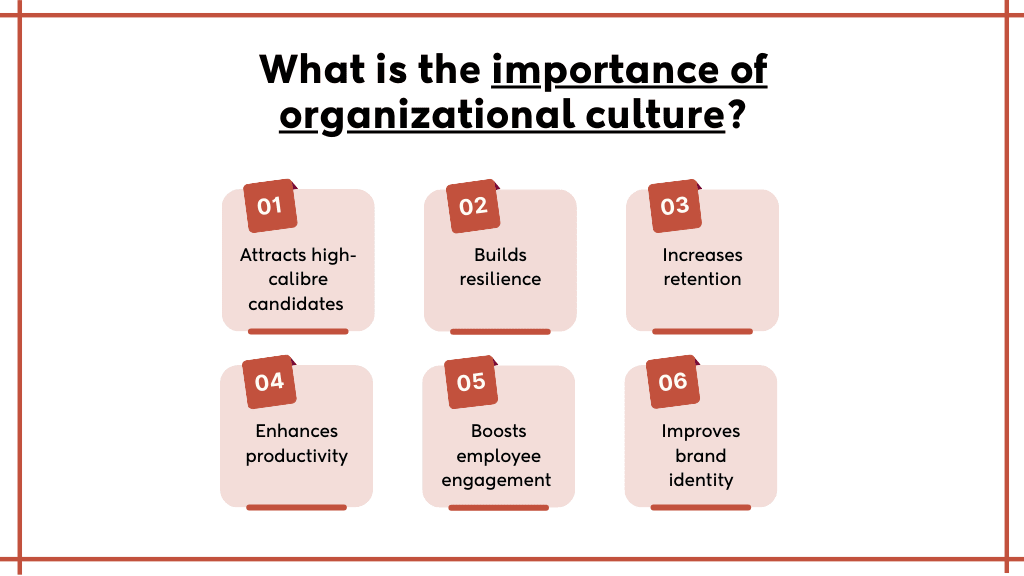Organizational culture is not what is written on the walls as posters. It is what is spoken, felt, and done between the walls on the floor. – Amby
From businesses making transit to modern setups to companies hinging on their traditional roots, every business has a different story to tell. And the one thing that differentiates one from another is their organizational culture.
It is an unwritten scripture of rules, beliefs, and values that set the tone of a company’s behaviour. An established framework of how management wants their workplace environment and behaviour to align.
Having said that, building an organizational culture is a deliberate act of weaving your vision into the cultural fabric of your workplace. And to get a sort of compounding interest in your efforts on that, ensuring continuous modification becomes crucial as time flies by.
In this post, I will talk about organizational culture, its importance, and the seven crucial elements that form the solid foundation of your organization.
What is organizational culture?
Organizational culture refers to the shared set of values, rules, systems, beliefs, and assumptions that define and shape the overall environment of an organization. It is a blueprint of the ways different departments function, employees make decisions, and leadership responds to various situations within an organization.

Along with that, it influences how employees, teams, and stakeholders respond and interact with each other to navigate their efforts in achieving the company’s mission and goals. It also defines an organization’s reputation by highlighting how various groups be it customers or investors, perceive it as a brand.
A great deal of effort should be invested in understanding and managing the company culture as it can substantially impact employee satisfaction, loyalty, and productivity.
7 elements of organizational culture

1. Work-life balance
Considering the rising demand for work-life stability, taking into account the well-being of your employees becomes crucial. Draining too much energy from your employees makes them feel vulnerable and burned out all the time.
When asked on LinkedIn, 60% of people voted for work-life balance as the prime component of today’s positive workspace.
When employers take care of the work-life balance, they create an environment where employees thrive harmoniously and feel supported. It supports their emotional, physical, and mental well-being, which greatly impacts their social health.
How to develop :-
The best way to address work-life balance issues is by providing employees with the flexibility to manage their work hours. Instil trust in them when they are remotely investing their time.
Prioritize productivity over the time spent, no matter the location it originates from. Additionally, encourage employees to take a break and unplug themselves from work after official working hours.
Learn more about the strategies for maintaining work-life balance in the workplace.
2. Core values
“At the heart of culture is the issue of core values.” – Dr Yemisi Bolade-Ogunfodun, a Lecturer and Programme Director at Henley Business School.
A company’s core values define the principles that an organization values and aims to achieve. These are meaningful commitments, and not just a handful of instructions printed on a piece of paper.
It is a foundation that forms the basis for actionable and observable behaviors. Employees reflect on these values and principles while handling their daily responsibilities.
How to develop :-
Shaping a culture that is neck-deep rooted in its values requires you to integrate them into every business aspect. While crafting your framework, present a unique purpose or mission that you want to accomplish.
Make sure these values are reflected in the leadership and management’s behaviour. And do not stay limited to the first testament passed on.
3. Professional development
Investing in your employees is like planting seeds for future returns on your investment. When your employees know you value their personal growth, you create an environment of continuity. Where the cycle of continuous learning and innovation is always in motion.
Employees tend to leave where they witness no sense of purpose or growth. Failing to do so results in high employee turnover. And retaining them for long becomes as hard as climbing a steep height.
A survey from the Pew Research Center analyzed that 63% of employees contributed to the rising quit rate. The reason being, that they didn’t perceive growth and advancement opportunities from their employers.
How to develop :-
Cultivate continuous learning and growth opportunities like hosting training programs, mentorship, coaching, and advancement programs for your team.
Not only that you can even add new responsibilities and duties on their plate for skill enhancement. But be mindful of their burnout, otherwise, you will be just creating diminishing losses for your organization.
4. Effective leadership
Leadership is the core foundation of an organization. And their role in shaping and defining the company culture is reflected through their behaviours and decisions. They strengthen the organizational values and set a tone for achieving the vision.
“Good leadership requires you to surround yourself with people of diverse perspectives who can disagree with you without fear of retaliation.” – Doris Kearns Goodwin
Effective leaders do not shy away or get offended from listening to a contradicting opinion and welcome innovative ideas and perspectives. Instead, they guide, inspire and motivate everyone to take the lead and foster an environment of collaboration where everyone can thrive together.
How to develop :-
No matter where you are in your leadership journey, developing and polishing effective leadership skills is mandatory. Do not settle in but challenge yourself every day to become a better version of yourself.
By investing in leadership training programs, targeting specific skills, and embracing continuous learning, you can showcase your commitment to doing good and the right thing for your organization.
5. Social connection
Being social creatures, we humans have always longed for connections. And their role in an organization is much like the glue that binds things together. These greatly influence the physical and emotional well-being of an individual.
We thrive in a work environment where despite countless individuals crossing our paths, some of us still feel loneliness and isolation. On the other hand, an employee with strong social connections experiences support all the time.
Research shows that 3 in every 5 employees who had strong social connections at their workplace, regarded themselves as being more engaged and motivated at work.
How to develop :-
By organizing team-building activities like workshops and hosting social events, you can build a community out of diverse groups.
Provide employees with the space to gel up and interact in informal setups for better teamwork. Let the natural connections form and witness the sense of collaborative enjoyment on tables.
Discover the 7 innovative ways to motivate disengaged employees for better engagement and productivity.
6. Open communication
Building a workplace where communication isn’t merely a choice. Those who consider it essential win the race to efficiency. It is a two-way street to communicating and understanding. Though as simple as it may sound, it isn’t a one-size-fits-all practice.
Successful communication depends on how well we listen, rather than how well we push our opinions on the person seated before us. – Kenya Hara
Powerful communication means where opinions and ideas from every hierarchical position are welcomed. No one holds back from the fear of being judged, misunderstood, or dismissed, instead participate in the free exchange of information.
How to develop :-
Establishing clear communication channels and platforms is the first step to enhancing internal communication.
Apart from that, open dialogue exchange and feedback sessions promote transparent and approachable interactions. However, for better in-person and external communication, regular meetings foster continuous engagement.
7. Diversity, equity, and inclusion (DE&I)
According to one recent report “Diversity Matters” by McKinsey & Company, companies that embraced racial and ethnic diversity are likely to experience 35 percent more financial returns.
Embracing diversity means being open-minded towards different characteristics, experiences, and perspectives. On the other hand, inclusion is a practice that must stay relevant during the entire lifecycle.
Some of the leading industries like Adobe and Microsoft are becoming influential figures in the market. Not because they enjoy a massive user base, but because diversity forms an integral part of their workplace culture.
How to develop :-
Establish guidelines that encourage and welcome diverse ideologies, backgrounds, and perspectives in your onboarding process.
Develop fair anti-bias policies that call for strict actions against discrimination. Apart from that you can even host mentorship programs and form employee resource groups for supporting networking.
What is the importance of organizational culture?

Apart from strategy and operations, the parameter hugely defines your success rate. It represents the core beliefs and values your company’s success is intricately built on.
This is why a positive organizational culture is important to your organization-
1. Attracts high-calibre candidates
every business aspires to attract and hire candidates that add to their organization’s success story. But failing to provide them with an environment to flourish when expecting the same is a big no. And with 46% of job seekers, considerably taking company culture into account supports the stated fact.
2. Builds resilience
Organizations that inject adaptability and agility into your core values to stay resilient in the face of turbulent crises. This results in simultaneous proactivity in preparing a contingency plan and fighting back adversity. It is a dynamic process that leads to sustainable growth and development.
3. Increases retention
With 24% of employees not feeling content with their company culture, and leaving the organization, backs up the importance of building a positive one. So, when you value employee efforts and invest in their skills, they are likely to commit to you for a long. It positively influences their decision for your good.
4. Enhances productivity
When you take your employees’ well-being, comfort, and happiness into account, they naturally feel compelled to invest in more and best for you. These gestures raise their productivity levels, eventually making them feel more motivated and aligned with your organization’s goals.
5. Boosts employee engagement
A healthy work culture never disappoints to bring everyone in the team on the same page. When employees feel more connected and motivated at work, better collaboration and innovation occur. And this highly engaged troop adds 21% more profits to its business performance.
6. Improves brand identity
A great organizational culture reflects your company’s inner values and external identity. If you are keeping up with the highest standards, you are naturally pitching yourself to be a desirable organization. Enhancing your employees’ satisfaction and customers’ outlook on your brand will turn them into your advocates.
Lastly, if your culture comes out to be a mere meaningless set of words, then you are attracting distrust for yourself. Because your people know the truth.
Conclusion
Corporate culture matters. How management chooses to treat its people impacts everything for better or for worse. – Simon Sinek
It is no secret that a great organizational culture speaks volumes. And it is not only your inner circle singing your chorals but every member of the group that brings you the reputation.
Consider it as a cumulation of the experiences, interactions, and values, that capitalize into trust and cohesion. Because a strong culture speaks genuine volumes of your praises in your absence as in presence.
So, being the architects of your organization, make sure to focus on the above-mentioned unique elements before shaping your organizational culture.
For more such useful information, keep reading-
The Impact of Employee Feedback on Creating a Positive Workplace Culture
Revealed! The Happy Secret to Better Work in 2023
FAQS
How can you change your organizational culture?
Depending on the element you want to improve or touch upon in your organization, you can take targeted action accordingly. However, a basic framework to carve out the modification plan includes determining and assessing your company goals and learning from setbacks. Lastly, do not forget that changing company culture is a gradual process that requires commitment from both leadership and the workforce.
How does leadership influence organizational culture?
Leadership represents the top-most tier of organizational culture. Apart from showcasing their decision-making, communication, and adaptability skills, they can put forth the persuasiveness needed to instil and embody the desired cultural values by being a role model themselves.
What are the four types of organizational culture?
The four main types of organizational culture are Hierarchy culture, Adhocracy culture, Clan culture, and Market culture.
Hierarchy culture: These are the organizations with clearly defined roles and chain of command.
Adhocracy culture: This culture is found most prevalent in organizations that thrive on risk-taking, adaptability, and innovation.
Clan culture: A work environment where collaboration and teamwork are valued is called clan culture.
Market culture: This is the most competitive of all the work cultures that emphasize competition, achievement, and results.




















No Comments